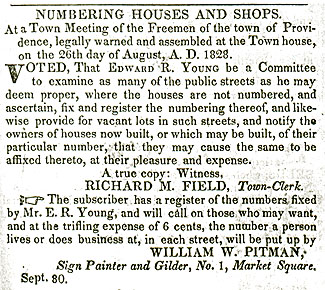Richard M. Field
(Richard Montgomery Field)
by Richard Slaney
May 17, 2002
|
Richard Montgomery Field
was born July 8, 1775. He is the younger brother
of Joseph Fuller Jr.,
born Joseph Field. (l) Richard M. Field
learned his toolmaking as
an apprentice to Joseph Fuller. (2)
Field would have completed his
apprenticeship to Fuller by 1796 and he may have
continued to work for
several years in the Fuller shop as a journeyman
planemaker. Sometime after
April 1798 Field formed a partnership with his
brother Joseph Fuller Jr.
and they made the woodworking planes that are
stamped "FULLER & FIELD."
The April 1798 date is significant because
that is when the "Joseph
Fuller & Son" copartnership ended. (3)
A plausible explanation
as to why the copartnership ended is that the
two brothers, ages 25 and
22, decided by April, 1798 to establish their
own toolmaking business.
The partnership between Joseph Fuller Jr. and
Richard M. Field lasted perhaps
six or seven years. There was also a short-lived
partnership between Field
and Daniel Arnold. Judging by the number of
"ARNOLD & FIELD" planes
that survive today, this partnership could not
have lasted more than a
year. Richard M. Field also worked on his own as
a toolmaker, stamping
his planes with the imprint "RICH'd. M. FIELD"
encased in a scalloped border.
(4)
All of Richard M. Field's toolmaking
took place in Providence, but the location of
his workshop is unknown.
It may have been in the house on Friendship St.
that the two brothers jointly
owned. The house was built after they purchased
the land in 1799.(5).
Field could not have had an easy time of it
working as a toolmaker in Providence
in the first decade of the nineteenth century.
His competition was Joseph
Fuller and John Lindenberger. Toolmaking was
Field's trade and he practiced
it with some success. But it is doubtful he was
ever able to earn a steady
income from toolmaking,. He went to sea for six
months in 1799 and he may
have returned to the sea several times. He most
likely took on other kinds
of work in addition to his toolmaking. Field is
described as a "toolmaker"
in a 1799 land deed. In 1813, in another land
deed, he is called a "mariner."
By 1815, now 40 years old, he has entered the
world of commerce and trade
in Providence. He is listed as a "merchant" in
1816, and as "Richard M.
Field, Esquire" in 1819. By 1824, he is a
partner in the firm of "Field
and Bosworth", lumber merchants. He was also
active in civic affairs. In
1828, he became a "city hall officer." In 1832,
when Providence was incorporated
as a city, Field became the first City Clerk, a
position he held until
his death in 1843.(6)
Notes: 1. Harriet A. Brownell, Genealogy Of The Fields. Providence, 1878, p.53. 2. Field could have learned the toolmaking trade from his brother, Joseph Fuller Jr., after April 1798 when the "Joseph Fuller & Son" copartnership ended. But it is unlikely that Field would be learning a new trade at the age of 22. The May 1799 land deed in which the brothers are called "Tool-Makers" and the fact that both names are on the planemakers stamp, "FULLER & FIELD", suggest a partnership between equals. Equal in the sense that Richard M. Field, like his brother, learned the toolmaking trade from Joseph Fuller, beginning his apprenticeship around 1789. 3. The end of the copartnership was announced in the Providence Gazette, April 18, 1798. Anne and Donald Wing found this notice and reproduced it in their article on Joseph Fuller in "Plane Talk", Vol. 15, No. 3. 4. The number stamp imprints that are found on the heel of his planes provide a clue as to the chronological order of the partnerships entered into by Richard Field. The Fuller & Field number stamp imprints were made with one set of number stamps. A different set was used to stamp both the Richard M. Field and the Arnold & Field planes. When the Fuller & Field partnership ended, Joseph Fuller Jr. kept the number stamps. When Richard Field joined with his friend Daniel Arnold to form a new partnership, he had to find another set of number stamps. 5. The house on Friendship St. was in the same neighborhood where Joseph Fuller lived and worked. The two brothers purchased the land on which the house was built from their father, John Field. In 1817 Richard M. Field sold his half interest in the house and land, but his brother Joseph Fuller Jr. was still living there in 1832. (Land Deeds. Providence City Hall, Bk. 40, p.318; Bk. 40, p321.) 6. Land Deeds. Providence City Hall, toolmaker - Bk. 40, p318; mariner -Bk. 37, p206; merchant - Bk. 40, p46; esquire - Bk. 42, p450; Field & Bosworth - Bk. 52, p105. See also Providence City Directories, 1828 thru 1843.
|
